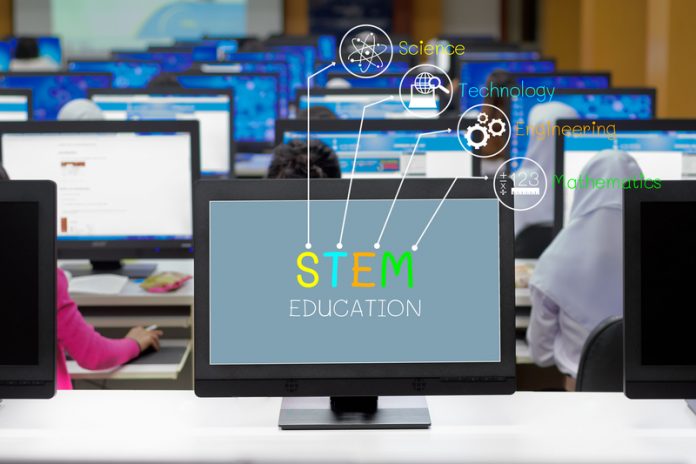The important mission of the National Science Foundation when it comes to fostering excellence in undergraduate science, technology, engineering, and mathematics (STEM) education for all students in the U.S. is placed under the spotlight by Open Access Government
The mission of the Undergraduate Education (DUE) division within the National Science Foundation (NSF) is to “promote excellence in undergraduate science, technology, engineering, and mathematics (STEM) education for all students.”(1)
It is worth noting that this division falls under the work of the Education and Human Resources (EHR) division, the aim of which is nothing but the achievement excellence in U.S. science, technology, engineering and mathematics (STEM) education at every level and in all settings (both formal and informal). The thinking behind this is to foster the progress of a well-prepared and diverse workforce of engineers, scientists, technicians, mathematicians and educators. “The purpose of these activities is to enhance the quality of life of all citizens and the health, prosperity, welfare and security of the nation”, they add on their website.
One important goal of the Undergraduate Education (DUE) division is to get the next generation of STEM professionals ready and to retain and attract more Americans towards STEM careers, we discover. Going into further detail, capacity-building strategies in this vein are four-fold:
- To identify the means to prepare and support teachers who can challenge and inspire students in the STEM disciplines and provide them with effective strategies and materials for learning;
- To invest in research on learning, to facilitate the translation of research into practice and to foster supportive learning environments and STEM pathways by various means including networking, partnerships, alliances and collaborations.
- To make sure that the STEM community is broadly representative of America’s geographic regions, individuals, types of institutions and STEM disciplines plus;
- To identify effective ways (formal and informal) to address the STEM knowledge requirements of adults, to help them be both informed and active citizens, as well as productive members of the workforce. (2)
Funding to advance STEM graduate education training
In terms of a concrete example of how the mission of the Education and Human Resources (EHR) division is put into practice, we need to look no further than a recent news story that details funding announced to advance STEM graduate education training.
Announced in early September 2018, we discover that the National Science Foundation’s (NSF) Innovations in Graduate Education (IGE) programme awarded $5.8 million to fund 12 new projects. These projects will pilot, test and validate innovative approaches in STEM graduate education.
Jim Lewis, NSF acting assistant director for Education and Human Resources offers his thoughts on these new investments in terms of how they will help to respond to the needs of the STEM workforce.
“These investments by NSF will help us identify advances in graduate education that address current and future STEM workforce needs. We have an opportunity to test innovative strategies in STEM graduate education to underscore the importance of interdisciplinary and broader professional training. Our goal is to identify educational methodologies and elements that will result in scientists that are ready to meet grand challenges in science and engineering.”
One point to add here is that the projects discussed above encompass many divergent areas in graduate education, but what they all have in common is that they aim to investigate approaches that could be scaled for use at other institutions throughout the U.S. It is worth noting that current research areas place the spotlight on graduate students’ professional identities, advancing community and industry engagement, “human-centred thinking” in engineering education and strategies that encourage diverse student success in the STEM disciplines. (3)
You can learn more about the projects discussed here at this link.
Leadership in science, technology, engineering and mathematics (STEM)
Looking at recent news from the Undergraduate Education (DUE) division, we find out that the NSF announced new awards in early September that represent the next major step for its programme, NSF INCLUDES. This endeavour concerns the development of a national network to enhance the country’s leadership in science, technology, engineering and mathematics (STEM) by broadening participation in these disciplines.
We know that the U.S. innovation economy requires skilled STEM workers to maintain the country’s status as a global leader in this area. This is very much supported by NSF Director France Córdova, who explains the thinking behind this programme.
“NSF INCLUDES was conceived as a sustained effort, a recognition that a problem as complex as the need to broaden participation in STEM requires a long-term, collaborative approach, After laying the groundwork through pilot projects, NSF INCLUDES is taking a significant step toward creating a national network with these new awards.”
For many years, the NSF along with its partners have sought to create opportunities in the STEM disciplines for all U.S. residents, no matter who they are or where they come from so that they benefit from access to education and employment. We end this article on this vital point, in the words of Córdova.
“NSF INCLUDES addresses populations largely missing in the current science and engineering enterprise. Their inclusion is essential in helping the U.S. maintain its position as the world’s leader in innovation. Through NSF INCLUDES, we are funding researchers and others who have great proposals that would move the needle.”(4)
References
1 https://www.nsf.gov/ehr/due/about.jsp
2 https://www.nsf.gov/ehr/about.jsp
3 https://www.nsf.gov/news/news_summ.jsp?cntn_id=296518&org=EHR&from=news
4 https://www.nsf.gov/news/news_summ.jsp?cntn_id=296531&org=DUE&from=news
Open Access Government











